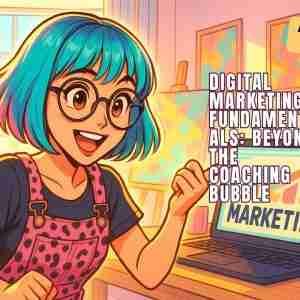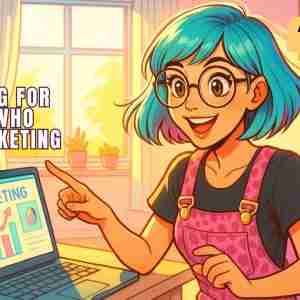Emotional Connection in Your Branding Strategy: Powerful or Manipulative?

How do you know if your branding strategy has gone rogue? Branding isn’t just about pretty logos or catchy taglines anymore. It’s about how you make people feel. But can you manipulate people through branding? Can you also create manipulative marketing campaigns?
Emotional connection is king. But like all powerful tools, it can be used with integrity or used to manufacture loyalty based on sentiment over substance.
So, where do we draw the line? When does it cross the line?
Emotional Connection Matters More Than Ever
Consumers are bombarded with 5,000+ marketing messages a day. How many ads appear on your mobile while you scroll through Instagram? Brands compete for attention, yes, but more importantly, they vie for attachment.
People don’t just buy products.
They buy identities, affiliations, feelings.
They want to see themselves in a brand. To feel like a brand gets them. To believe, “This isn’t just toothpaste—this is my toothpaste.”
And once that emotional bond is formed, loyalty follows. Sales follow. Word of mouth follows even when the brand screws up.
The Psychology Behind Emotional Branding
At its core, emotional branding taps into basic human needs:
Belonging
Identity
Trust
Stability
Recognition
It’s primal.
When a brand reflects your values, lifestyle, or aspirations, you feel seen, let your guard down, and open your wallet.
“Nike believes I’m an athlete.”
“Apple thinks I’m creative.”
“Aveda sees me as environmentally conscious.”
“Patagonia respects my values.”
And that feeling? It creates a dopamine hit and, over time, a behavioral pattern. Loyalty becomes less about logic and more about love. [Now, read that again.]
How Brands Create Emotional Resonance through their branding strategy
So, how does a brand make you feel something real?
Storytelling with Purpose
Emotionally resonant brands don’t just sell—they narrate. They build stories in which the customer is the hero, the brand is the guide, and the end goal is transformation.

Example:
Dove’s “Real Beauty” campaign didn’t sell soap. It sold self-esteem. It tapped into social dialogue about body image, making people feel seen, heard, and empowered.
Shared Values
When a brand stands for something, customers who share those values lean in.
Patagonia doesn’t just sell jackets—it sells environmental activism.
Ben & Jerry’s aligns with social justice causes.
Glossier builds a community around self-expression and simplicity.
It’s not about politics—it’s about identity affirmation.
Consistency & Experience
Want trust? Be predictable. From packaging to customer service to social media tone, the best brands repeat emotional signals like a love language.
Think of Starbucks:
Friendly baristas using your name
Familiar decor
That first sip feeling of “ahh, I’m home”
That’s branding, not just coffee.
Aesthetic Cues That Evoke Feeling
Color. Typography. Music. Copy. Brand aesthetics are not accidental—they’re engineered to evoke emotions.
Calm app? Soft gradients and ocean sounds.
Red Bull? Sharp fonts and adrenaline colors.
Toms? Rustic photography and handwritten vibes.
Visual and sensory branding is emotional shorthand.
So, Is Emotional Branding Manipulative?
Okay. Now the spicy bit. When does emotional branding become emotional manipulation?
Is it ethical to design customer experiences around subconscious emotional triggers? Are brands engineering loyalty without delivering real value?
The Grey Area Between Connection and Control
On one hand:
Emotional branding builds real community.
It helps people feel seen.
It allows small brands (like coaches or creators) to compete with big names.
On the other:
It can be used to bypass critical thinking.
It can prioritize vibe over value.
It can keep customers loyal to underperforming or unethical brands.
Manipulation happens when the emotional promise isn’t backed by genuine action.
If a brand says “We care about you,” but treats staff like dirt? Emotional manipulation.
If it says “We’re inclusive” but erases marginalized voices in its hiring or storytelling? Emotional manipulation.
Let’s Be Honest: Brands Are Emotional Engineers
And in fairness, so are we.
If you’re a life coach helping clients feel empowered, or a wellness coach guiding clients to peace, you’re in the business of emotionally transformative experiences.
Branding helps signal that transformation before people even book a call.
The real question is:
Are you using emotion to sell a truth—or to cover up a lie?
Why This Matters for Coaches & Small Brands
As a coach, you’re not selling products but transformations. Your work is emotional by nature. So your brand must reflect that emotional journey.
But let’s be clear: You don’t have to be dramatic or overpromise. You do have to be consistent, intentional, and honest.
Ask yourself:
What is the emotional shift I help create?
How do I reflect that shift in my branding?
Am I leading with real stories or fabricated optics?
When your branding reflects the real emotional journey of your clients, it becomes undeniably magnetic.
5 Ways to Add Emotional Connection to Your Branding strategy (Without Manipulation)
Want to do this with integrity? Try these:
Know the real Emotional Core of Your Offer
Not just the benefits. The feeling people get from working with you.
Is it relief? Excitement? Confidence? Freedom?
Build your brand experience around that emotion.
Use Real Testimonials and Client Stories
Let people hear how others felt working with you, not just what they did. Use real feedback and ask permission beforehand from your clients to use it.
Choose Brand Aesthetics That Reflect Emotion, Not Just Trend
Don’t pick blush pink because it’s “cute.” Pick it because your brand is soft, intimate, nurturing.
Don’t choose a sans serif font just to look “modern.” Choose it if it reflects your brand’s clarity, edge, or simplicity.
Write with Heart and Honesty
Don’t copy others. Use your own voice. If you’re witty, be witty. If you love using memes, use memes. Remember: you can’t copy someone else 24/7!
Be Consistent in Experience, Not Just Look
It’s not enough to look warm if your DMs are cold. If your brand is joyful, be joyful in how you reply to emails, how your content feels, and how you deliver your coaching calls.
Branding is every touchpoint. Not just design.
Want to Learn How to Brand With Heart and Strategy?
Inside my course, Branding and Marketing for Coaches, we explore emotion and being ethical.
You’ll learn:
How to identify the core emotional resonance of your brand
How to choose visuals and tone that reflect your true coaching energy
How to use storytelling (without oversharing) to connect
How to create marketing that feels good to you and your clients
Use the coupon d0bb4481e2bbCOACH until June 26 @10:00 (UK time)
Branding and Marketing for Coaches (Life, Health, Wellness)
Be a Brand That Feels Like a Friend
Yes, emotional branding is powerful. But it can be misused. When done with heart, intention, and clarity, it becomes a force for good.
People are craving realness. Give them that. Reflect on who they are. Reflect on who you are.






